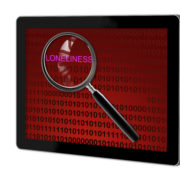Making decisions really is a demanding workout
We make a staggering number of decisions – every minute, hour and day.
Many of these decisions are not made consciously. Those that happen with frequency have become a ‘pattern’ and formed a mental map, so happen non-consciously. For example, do you ‘think’ about how you get out of bed in the morning? Or, what arm you’re going to put into your shirt sleeve first, or whether to put your left or right shoe on first? Not likely! You have done this so often, it’s automatic.
Decision making is multi-layered. It can involve a complex process of seeking and selecting the needed information, negotiating with others, seeking an optimum outcome and making best use of your time.
All that, and we haven’t even considered the ‘not’ decisions! ‘Will I or won’t I respond to that email?’ (or even check email), ‘accept or decline that meeting request’, and on the list goes.
Of course, not all decisions are created equal. There are selections and choices that we make, and then there are the bigger decisions.
Some observations:
- Decisions are hard work. Decision making depletes the brain’s resources. The brain needs glucose to create the neurotransmitters that send messages between neurons. Sometimes that coffee or biscuits is just what’s needed!
- Given the number of decision opportunities in a day, it’s not surprising that we suffer from decision fatigue. The pre-frontal cortex aids in providing ‘executive director functioning’ and is a voracious consumer of energy, and, is a limited capacity in the brain. It’s often referred to as the Goldilocks of the brain – with conditions needing to be ‘just right’ for it to operate optimally. Too much, and you suffer mental fatigue; too little and you may be prone to distraction.
- Decision fatigue helps to explain why people may veer ‘off message’, make mistakes, succumb to temptation (it’s linked with willpower or the brain’s ability to inhibit – also a limited resource – a topic for another day).
- Emotions play a large part in our decision making. Emotions are our brains way of telling us we need to pay attention. And that something might be good (go towards) or bad (move away from) for us.
- Emotions (non-conscious) may emerge into our conscious mind as an intuition. Before a feeling or thought becomes conscious. How many times have you heard, or used, ‘go with your gut’, or ‘follow your heart not your head’, form of logic in decision making?
- Even the ‘best’ decision is laced with bias.
Some tips to assist:
- Through reflecting, you engage your conscious thought processes, and, slow and focus your thinking by activating the reflective neural networks.
- If you feel tired or demotivated, replenish your brain resources – have a drink of water, a piece of fruit or a biscuit, go for a walk, speak with a colleague, meditate for a few minutes, or choose something else that might work for you.
- Make decisions, even when they are hard, rather than avoiding or putting them off helps to optimise the PFC’s resources. Constant revisiting of a potential decision point or rumination depletes the limited capacities of your executive director function (PFC) and willpower (inhibition)
- The ‘value add’ of pursuing decisions even when they are difficult is that you set a great example via role-modelling.












Leave a Reply
Want to join the discussion?Feel free to contribute!